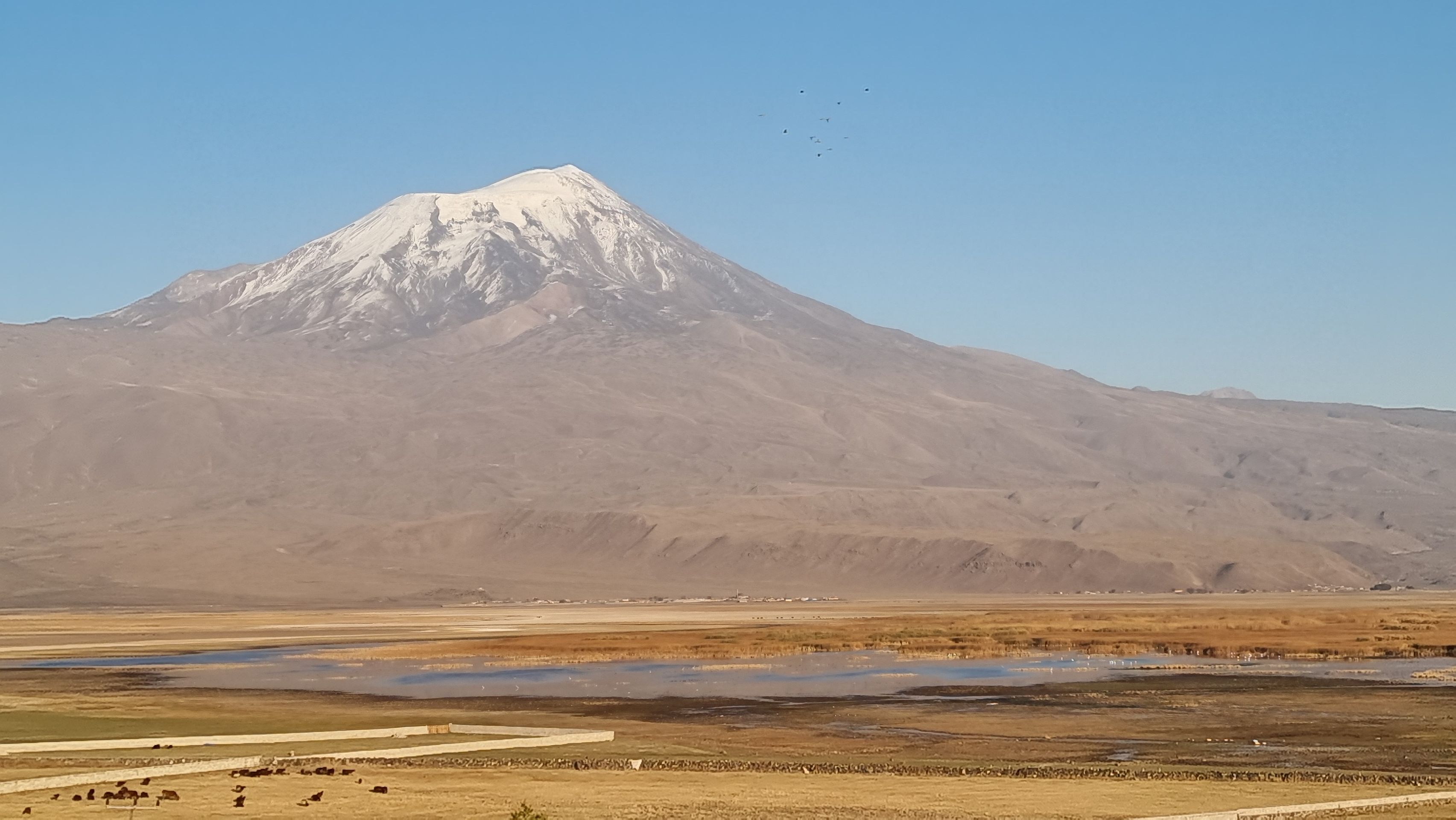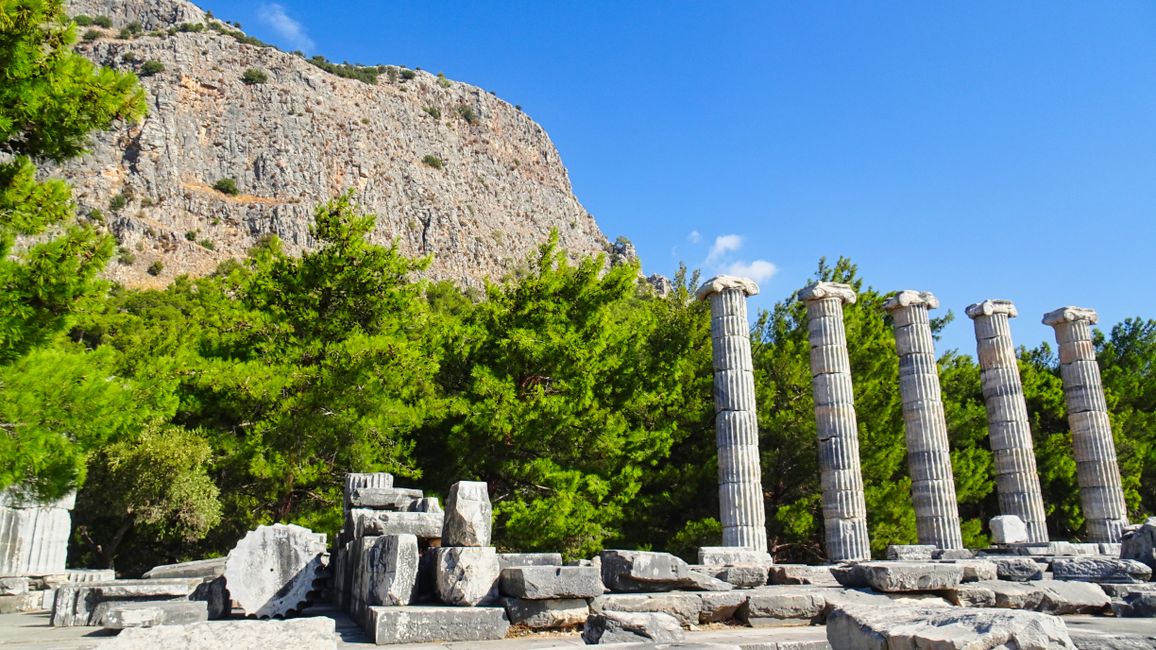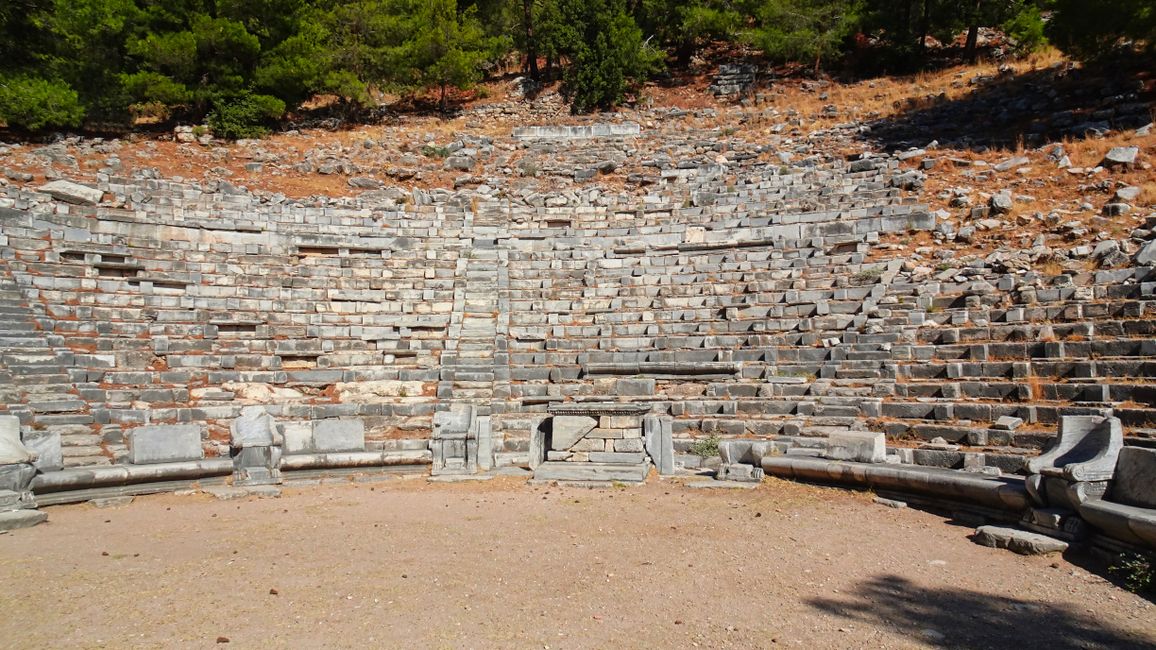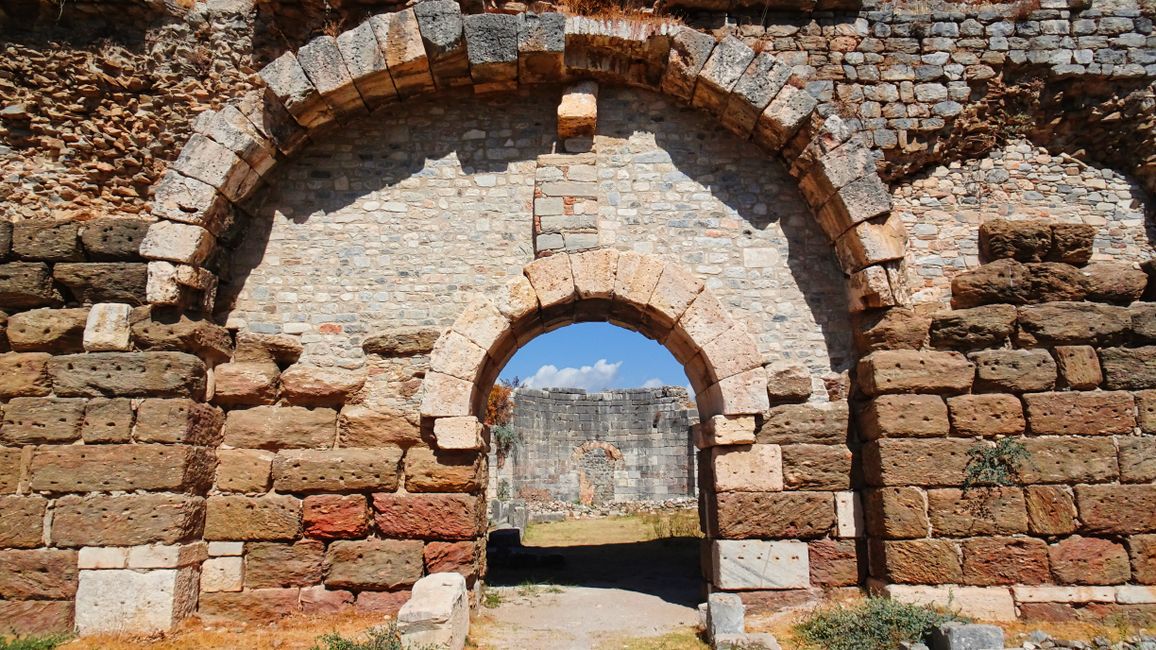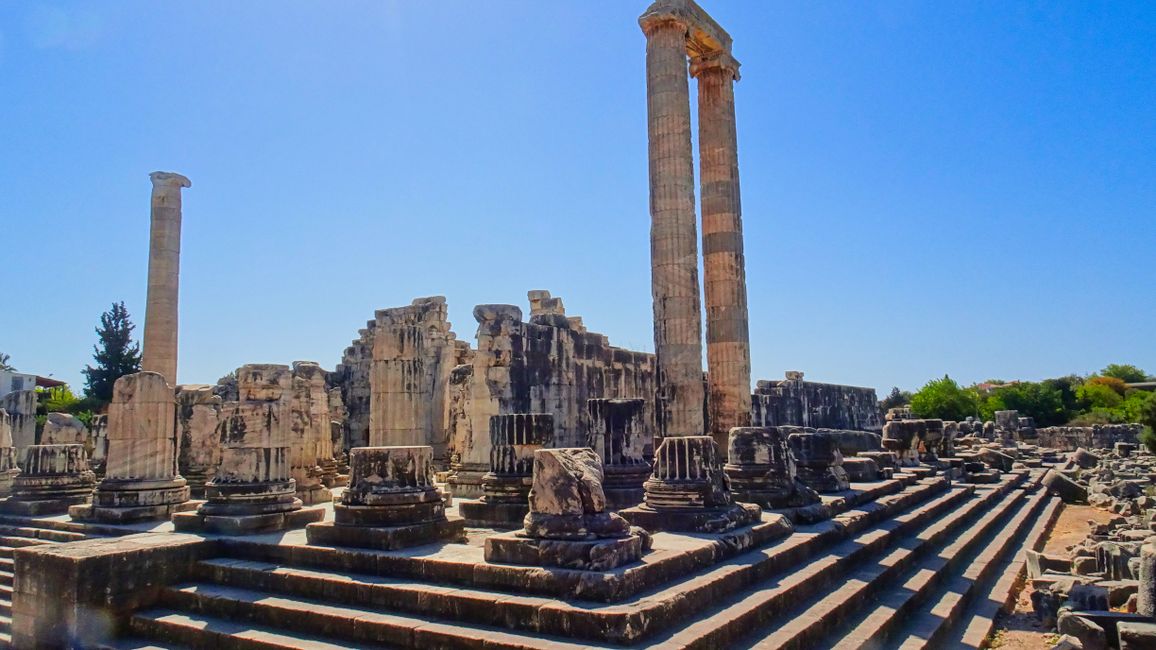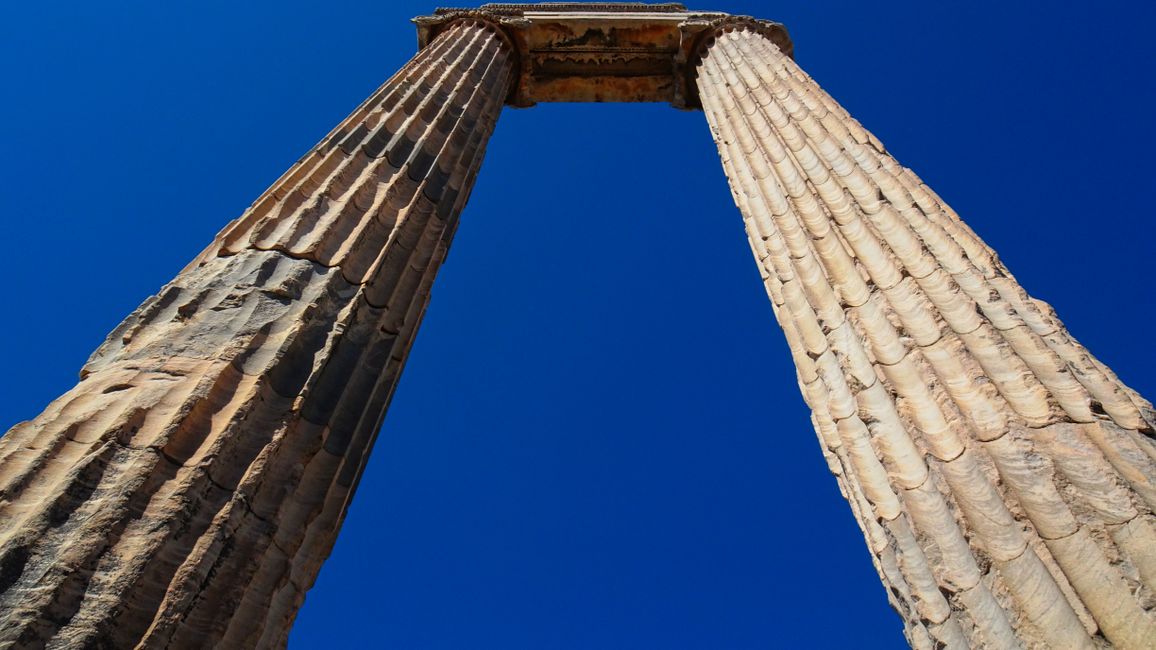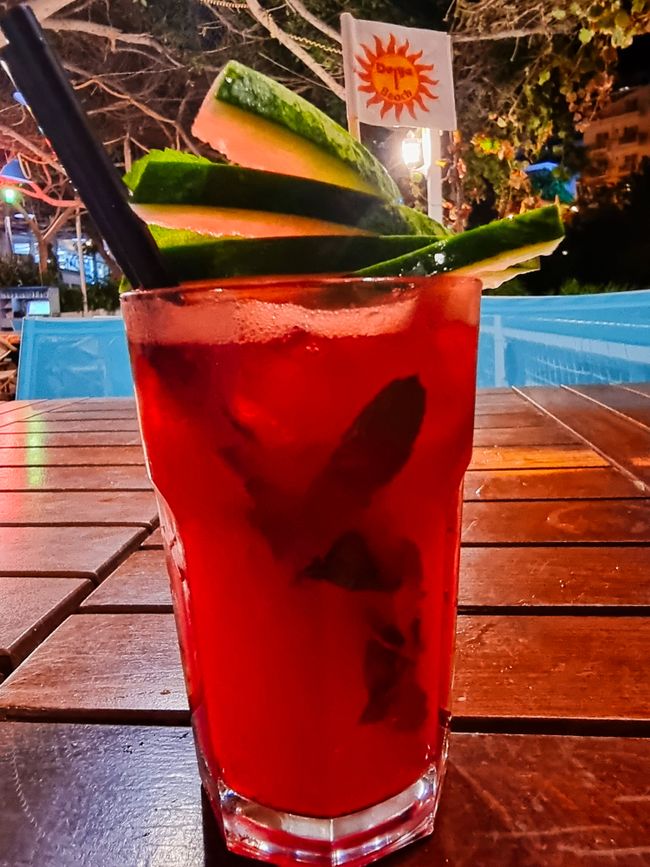Don Curry is into ruin hopping
ຈັດພີມມາ: 10.10.2021
Don Curry enjoys reading travel guides. And when he has a specific destination for his next trip, he reads all the travel guides for the desired region, whether in German or English. This leads to a great increase in knowledge, but makes it difficult to skip any sight along the way. Thus, at the beginning of today's day, a completely new form of travel emerged from knowledge and the feeling of indispensability: ruin hopping.
Beforehand, Don Curry fortified himself extensively and specifically Turkish at his all-inclusive breakfast buffet, checked out, and relievedly removed the orange plastic band from his arm. Maybe he would love all-inclusive if he were really old someday, but at the moment he couldn't find much enjoyment in this overly caring holiday option.
So he started off freely along the Ionian coast to the south. South of Ephesus, other significant ruins sites are lined up like pearls on a string, bearing witness to the former importance of this region. The ruins of Priene were the first to be discovered. Their special charm lies in the fact that Priene lost its status already in Greek-Hellenistic times and therefore was not transformed or rebuilt in Roman-Byzantine times. Priene actually offered the ruins of a real Greek city in a scenic environment: the city was built on several terraces in front of a mighty rock massif. Don Curry was particularly pleased with the remains of the large Artemis temple and the surprisingly well-preserved theater, in which even the honorary seats in the front row had survived the ages.
The next stage of ruin hopping also featured a theater: the city of Miletus, once located directly by the sea, but now kilometers away due to millennia of silting. Even the theater of Miletus used to have a place right on the waterfront and was probably the first building that visitors approaching Miletus by sea noticed: a colossal monument that surpassed the dimensions of the Priene theater multiple times over. The other ruins of Miletus were scattered widely across the plain, so Don Curry only visited a small part of them, such as the meager remains of the bishop's palace and St. Michael's Church. At the edge of the ruins field, there even stood an intact building, the Isa Bey Mosque from 1404, which had probably recently been so intensively restored that it appeared almost clinically clean. Nevertheless, it radiated a distinct dignity and timelessness far removed from the baroque splendor of Sinan Pasha's mosque buildings and even more so from the ostentatious extravagance of modern mosque architecture, as Don Curry had already experienced. He discovered one last highlight of Miletus right next to the mosque and a bucolic olive grove: the remarkably well-preserved remains of the Faustina baths, in which not only many walls stood, but even two statues of the former bathing facility could still be found in their original place.
Another 40 km hop to the south finally led Don Curry to Didim, where the colossal remains of the Apollo temple and oracle of Didyma rose or spread out. Undoubtedly, it belonged to the most monumental structures of ancient times, even though it was never completely finished despite a construction period of 600 years. (The builders of Berlin's airport are now breathing a sigh of relief: 600 years...) For example, one of the three surviving columns still lacks the distinctive fluting. While modern visitors are quite accustomed to towering buildings, for the contemporaries of the Hellenistic era, this temple must have exceeded all known measures: the 120 columns in total reached a height of almost 20 meters, the staircase to the vestibule was laid out so steeply that every visitor felt particularly small when looking up, and the huge Medusa's heads at least seemed worried - everything immediately commanded awe from people. Here in Didyma, according to legend, the birthplace of Apollo, one could feel exceptionally close to the god.
Don Curry spent almost 3 hours on his ruin hopping, not including travel time; by now, he also felt a slight hunger. Directly across from the Apollo temple, a restaurant offered shady places on the terrace. Don Curry ordered lemon chicken from an extremely grumpy landlady, without knowing exactly what to expect. The result was delicious: bite-sized pieces of chicken in a creamy lemon-curry sauce, surrounded by flavorful risotto and greasy fries. A tea to finish, and his strength for the onward journey regenerated. The hopping ended here in Didim. However, Don Curry still wanted to visit a Karier burial monument in the city of Milas. Unfortunately, it was completely surrounded by a high construction fence, so that only one spot allowed for a photo of the unattainable memorial. After that, there was only one motto: Drive, drive, drive - almost 300 kilometers until Don Curry reached his southernmost accommodation of the entire trip in Kaş, already in the dark.
As soon as he entered the town, he immediately noticed that Antalya was not far away anymore. Kaş has also opened up to international tourism, with the entire city center filled with restaurants, kebab shops, hotels, and guesthouses. Since Don Curry didn't care much for extensive beach visits, he had booked a hotel in a higher location, the Belinda Hotel, which offered fantastic views of the sea and the nearby Greek island of Kastellorizo. Yet, he gladly took advantage of the advantage of Kaş's direct beach location: in a restaurant right by the sea, he ordered a beach burger and the regular Bomonti beer (he bought the unfiltered version at a supermarket in Edirne). As the crowning glory of Sunday evening and after all the strenuous ruin hikes, he treated himself to a watermelon Mojito. His taste buds were hopping for joy in his mouth...
ຄໍາຕອບ
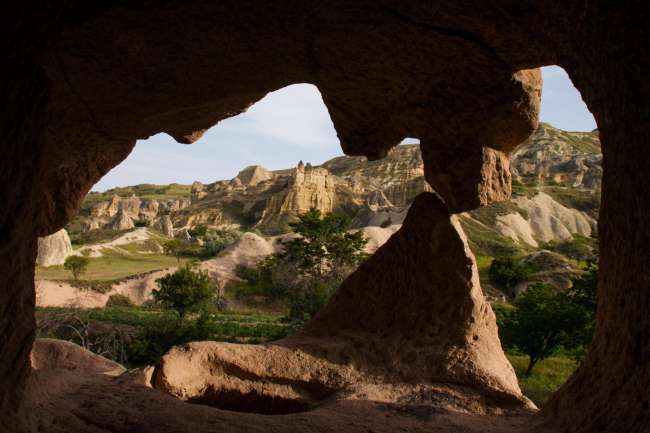
ລາຍງານການເດີນທາງ ຕຸລະກີ
